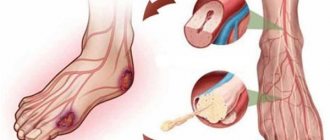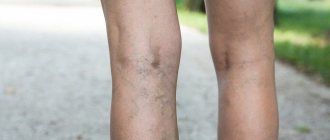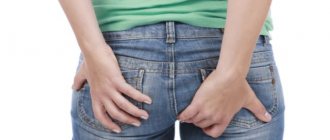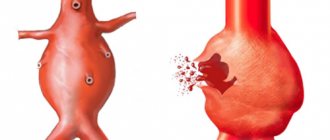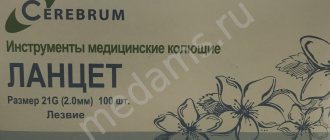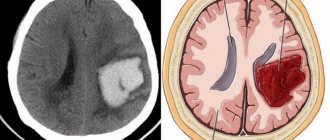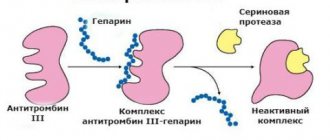Why does this product help so well?
The product is a soft, dense strip of fabric that retains its shape - this is the main difference from gauze analogues.
Elastic bandages are made from cotton, lycra, and synthetic fabrics. A high percentage of cotton component ensures better skin breathing while wearing the bandages. The use of elastic products is extremely wide: treatment, preventive wearing for varicose veins, fixation after injuries, operations.
Another important feature: the products are reusable. The cost of an elastic bandage is tens of times higher than the price of ordinary gauze, but if the latter has to be thrown away after several hours or a maximum of a day of use, then a high-quality fixing bandage will last weeks, even months after a muscle strain. Such items do not imply sterility.
What is it needed for
The price of an elastic bandage depends on several factors - type, composition, size, percentage of natural fabric, length, level of extensibility. Although this is the most expensive of dressings, for many diseases the patient needs it.
The properties of compression bandages significantly improve treatment results and help prevent various diseases. The range of application of special medical accessories includes several main areas:
- Sports and traumatology. In this area, the use of plaster casts and normal compression bandages to prevent injuries is widespread. For fractures, bandages are a means of preventing swelling, so a tight bandage is often applied first, and only then a cast. In case of sprains, medium tension is used to fix the joints.
- Phlebology. To correct venous pressure, prevent stagnation of blood flow and the formation of abnormal capacity of the veins of the lower extremities, “motion bandages”, long bandages (in severe cases), and medium elasticity are also used.
- In the treatment of lymphedema, the load from the bandages is added to the massage procedures to prevent the recurrence of lymph congestion and swelling.
- For burns, operations, correction of blood circulation in tissues, an elastic bandage protects against the pathological formation of colloidal scars and improves healing.
Two important parameters are considered to be rest compression - that is, the compression that appears in the absence of physical activity and the level of pressure during movement. Low pressure provides greater mobility, these models are called “long pull”. Medium, short elongation limits the load on the limbs and limits motor actions.
How to use it correctly
Before purchasing an elastic accessory, you need to understand how to use it correctly. Products of different stretchability are used in certain cases.
You need to learn how to bandage your leg with an elastic bandage to maximize the effectiveness of self-bandaging at home. The same rule applies to the other injured limb.
In order to apply a bandage, you can follow an algorithm that is easy to remember:
- It is better to carry out the procedure in the morning, at rest.
- If we are talking about the lower limb, it should be kept elevated - to drain the blood and prevent swelling and additional expansion of the veins.
- The bandage is placed on the leg from bottom to top, starting from the ankle and ending with the area below the knee joint.
- Each top layer in the process of application is weaker than the previous one, the bottom one lies the densest.
- Final fixation is carried out using special fasteners.
- Wearing the product should not be accompanied by the appearance of bruises or other side effects.
Advantages and disadvantages
When choosing between compression stockings and elastic leg wraps, more people will choose the latter option due to its lower cost. An elastic bandage is an indispensable material in the postoperative period and for daily use for varicose veins, but it has its advantages and disadvantages. Advantages of elastic wrap:
- versatility of use (for operations, during pregnancy, for the prevention of thrombosis, etc.);
- low cost;
- improving blood flow in the veins;
- reducing the feeling of heaviness;
- relieving swelling in the legs.
Read also: Varicose veins of the pelvis how to treat
Disadvantages of an elastic bandage:
- beginners may bandage incorrectly - too tightly or loosely, which will cause deterioration of the leg;
- the bandage may slip;
- the material is too dense, it’s hot in summer;
- It takes a lot of time to wrap the leg.
Main types
Elastic bandages come in knitted and woven varieties. The first ones are cheap, but short-lived. They can withstand several washes, after which they stretch and stop performing their functions. They should only be used as a whole, since when cut, the bandage will unravel and fray at the edges.
Woven fabrics are significantly more durable than knitted fabrics, can be used for more than a year, and withstand washing well without losing their fixing properties.
Important! Elastic bandages should be washed every 2-3 days in warm water with soap or in a washing machine on a delicate cycle, without spinning. To dry, place them on a dry cloth or towel.
An elastic bandage for varicose veins can have different stretchability, this should be taken into account when purchasing:
- Short (stretches about half the length or a little more), used in the complex treatment of advanced forms of the disease. This property is possessed by the Intex bandage, a hypoallergenic fixative that does not stick to clothes and hair. Usually the kit comes with a special fastener to prevent the bandage from slipping.
- Medium (can stretch by 130-150%), it should be used in case of unexpressed varicose veins. This is a compression non-stick bandage. It is easy to put on and take off and comfortable to use thanks to the toothed clasp. It retains its shape for a long time and is inexpensive.
- Long (stretching more than one and a half times), it is optimal to use such a bandage for the prevention of the disease in the initial stages. The Lauma bandage has high elasticity and a special retainer that allows it to stay in place even under clothing.
If you only have an elastic bandage with a high degree of stretchability, but you need a higher one, then it is enough to bandage your legs with a double or triple layer to increase the pressure.
Important! While wearing a short-stretch bandage, pain and a feeling of strong compression may occur. In this case, it is necessary to change the degree to medium. Also, do not apply too much force when bandaging, otherwise the amount of pressure may become too high.
Advantages
Elastic bandages are used to apply compression bandages for various types of fixations.
They are divided into commercial types, depending on the size: the length of the product is given in meters, the width - in centimeters. The type of elastic band depends on the purpose. Elastic bandages are:
- compression;
- fixing.
Compression
Compression elastic products are designed to apply pressure to the veins of the lower extremities. This allows for increased movement of blood and lymph in the vessels. Compression bandages reduce the strain on the muscle tissue that keeps blood moving through the veins. Accelerating blood flow eliminates blood stagnation and reduces strain on the veins.
Compression tapes are used as a therapeutic and prophylactic agent.
Their dimensions: length at least 2.5-3 m, width 8-10 cm, stretching of the product is allowed only along the length, the material must contain at least 50% cotton.
Bandage lauma
A special feature of lauma elastic bandages is that the latex thread included in the tape is completely covered with cotton fibers. The Lauma tape has the following advantages:
- “breathable material;
- absorbs moisture well;
- hypoallergenic.
Available in standard sizes: width 8-10 cm and length up to 3 m, and in increased sizes: width 12 cm, length 5 m.
Bandage intex
Intex tapes contain silver ions, which improves the treatment of diseased veins and accelerates the healing of venous ulcers.
Characteristics:
- ease of use;
- reliable fixation;
- naturalness and environmental friendliness of the material.
Intex tapes are produced with a length of 1.5-5 m, a width of 8-10 cm, and 3 elongation classes.
The main classification of compression products is their extensibility. Elastic bandages for varicose veins can be of several types of extensibility:
- short (up to 70%) - recommended for severe damage to veins with a tendency to form trophic ulcers;
- medium (from 70 to 140%) - used for moderate severity of varicose veins;
- high (140% or more) - prevention of venous disease or treatment in the early stages of formation.
Depending on the material they are made of, they can be knitted, woven, or non-woven. The strength and wear resistance of products depends on the material. The best option when choosing is considered to be a bandage length of about 6 m and a width of 10 cm. Many models have metal clamps that reliably hold the fabric in a given position.
In pharmacies you can find many types of elastic products used for bandaging. Each has its own characteristics and is used for different degrees of varicose veins:
- Bint Lauma. High value of elasticity and elongation. It is better to use this type during treatment or prevention of inflammation of the veins. The kit includes a special-purpose metal fastener for holding it after wrapping it on the leg. It is recommended to use a bandage after surgery on the legs, for sprains and dislocations, to fix prostheses;
- Bandage Intex. Characterized by slight stretchability. The kit includes a special elastic fastener to secure the bandage tightly. Can be used on any part of the body. A bandage is made 20 cm long, tubular. Place in packaging that does not allow water to pass through. Will not stick to skin, hair or clothing. Non-allergenic, does not cause irritation;
- Compression bandage. Most often used for the conservative treatment of varicose veins. On the lower extremities with damaged veins, it is possible to bandage them to improve blood circulation through the veins. The compression bandage works like a compression stocking. It is easy to securely fix and apply the necessary amount of pressure on a leg with varicose veins. After bandaging, it does not slip and is easily removed. Does not deform with long-term use. The low cost allows everyone to buy it.
Woven ones - they stretch less than knitted ones, are more wear-resistant, do not crumble when cut, and can last about a year. Knitted ones stretch faster after washing, their length can be reduced by cutting.
In addition, they are classified according to width and length, as well as the degree of elongation:
- short elongation (or high compression) – extends by a maximum of 70% of the original size;
- medium elongation (or medium compression) – up to 140%;
- long elongation (or low compression) – over 140%.
There are several options for bandages used to apply a bandage for varicose veins. The difference may be both in the degree of extensibility and in composition.
According to their composition, elastic bandages are divided into fabric and knitted. It is worth giving preference to fabric, as it is stronger.
If the main goal is prevention, then you should give preference to a bandage with long stretch. All other degrees of sprain are suitable for treatment.
It should be taken into account that the degree of stretching determines the pressure at rest and the pressure during muscle contraction. Therefore, if discomfort does not go away during movement with medium stretch, then it is worth purchasing elastic bandages with long stretch.
The length of the bandages starts from 3 meters and ends at 10. Usually they buy and use a length of 4-6 meters. The width of the bandages does not change depending on the length - 10 cm.
In almost any pharmacy you can purchase elastic material for the treatment of such a dangerous disease.
You should know that there are several types of these funds, and each should be used in a specific case.
- Binte Lauma. The degree of elasticity and stretchability are high. Recommended for medicinal purposes and as a prophylactic. To keep it in place after winding, there is a metal fastener. It is usually used by patients who have had leg surgery, people who have suffered from sprains and dislocations, as well as patients who need to fix their prostheses.
Today, given the demand and popularity of using elastic bandages not only for varicose veins, but also for various other disorders, experts have developed several varieties of such therapeutic devices. Elastic bandage can be of 3 types:
- Lauma elastic bandage is a bandage with high stretchability and elasticity, providing excellent results of use. It is most often prescribed for the prevention of inflammatory processes against the background of progression of varicose veins, as well as after operations. In addition to the bandage itself, the manufacturer included a special metal retainer, thanks to which the bandage sits firmly and does not move out throughout the day.
- Intex bandage - despite the low stretchability, the bandage is perfectly fixed with an elastic fastener. The bandage has hypoallergenic properties, it does not stick to the skin or hair, and its size does not exceed 20 cm.
- Compression bandage is a method of conservative treatment of varicose veins, which, thanks to proper compression, improves blood flow in the legs. The mechanism of action of such a bandage is similar to compression hosiery, but it is much easier to bandage and is firmly fixed for the whole day. The bandage does not deform, can be used repeatedly, which means it is economical and practical.
You can purchase any of the 3 types of elastic bandage at any specialized store of medical devices, tools and equipment. Unlike shapewear (socks, stockings, knee socks, tights), a bandage costs several times less, but can be worn much longer.
The cost of one bandage does not exceed 20 rubles, while compression hosiery will cost from 2,000 to 10,000 rubles.
Elastic bandages can be of several types. You can choose one type or another only in consultation with your doctor, who will determine the required stretchability, type of bandage and material. The following types of bandages are distinguished:
- Woven;
- Knitted;
- With short elongation (less than or equal to 70%);
- Long elongation (over 140%);
- Average elongation (within 70-140%).
Woven bandages are more durable and reliable. They can be used for more than a year even with frequent washing. But knitted ones are used for no more than 15 sessions. In addition, woven ones can be cut, which will not affect their properties, while knitted ones will quickly disintegrate into separate threads.
When choosing, it is better to give preference to the long stretch of the bandage, since medium and short require special use. They are suitable for the treatment of varicose veins. For bandaging, it is better to use 6-meter units.
Symptoms of varicose veins
The use of an elastic bandage for the treatment and prevention of varicose veins is possible if the following symptoms are observed:
- swelling of the legs at any time of the day, not only in the evening;
- legs get tired quickly, painful sensations appear;
- At night, cramps in the feet and/or calf muscles appeared or became more frequent;
- spider veins appear on the legs or dark veins begin to appear clearly;
- the veins swell and become prominent.
Important! Female hormones are one of the factors that provoke varicose veins, so taking hormonal pills, such as birth control, may also contribute to the disease.
Mistakes when using a bandage
Without knowing how to properly apply an elastic bandage for varicose veins, you can make many mistakes that obviously will not add benefit to diseased veins. Common mistakes when applying a bandage:
- When bandaging, the foot is not involved. This is wrong, because this way the bandage is not securely fixed, and pressure should be created in the foot too.
- Only areas with visible veins are bandaged. This creates the wrong pressure. The bandage should be applied to the entire leg or at least just above the knee. In addition, if the veins are not visible, this does not mean that there are no internal varicose veins.
- Incorrect pressure distribution. When bandaging, you need to bandage the lower part of the leg tighter, and the upper part looser.
- The bandage is applied unevenly. This makes compression ineffective.
- The distance between turns is too small or too large. This makes the pressure too much or too little.
Important! To avoid common mistakes, you should bandage your feet for the first time in the presence and under the supervision of a doctor. He will immediately point out even minor shortcomings and help you avoid them in the future.
Do you still think that getting rid of varicose veins quickly is difficult?
An advanced stage of the disease can cause irreversible consequences, such as gangrene, blood poisoning. Often the life of a person with an advanced stage can only be saved by amputation of a limb.
Under no circumstances should the disease be started!
Even ancient doctors (Hippocrates, Paracelsus, Galen) tried to cure varicose veins. For many years, doctors have been looking for ways to combat this disease. Now doctors recommend modern methods of treating varicose veins, which help improve the patient’s condition.
Modern methods of treating varicose veins
Each generation of doctors tried to apply more and more new methods of treatment. Some doctors prefer surgical intervention, some prefer medication. Recently, specialists are increasingly using new treatment methods that are more effective and efficient than traditional ones. These ways to combat the disease include:
- Sclerotherapy.
- Laser treatment.
- Radiofrequency ablation of veins of the lower limb.
- Microphlebectomy.
Sclerotherapy procedure
There are various ways to get rid of varicose veins. And one of them is the method of compression phlebosclerosis.
This method has worked well for a long time. It is based on the use of drugs that, when injected into a vein, “glue” it from the inside due to the interaction of the components of the drug with the vascular wall.
As a result of this, the vein is switched off from the blood flow, since the movement of blood through it completely stops. The drugs used in sclerotherapy are highly effective and have a low degree of toxicity.
The sclerotherapy procedure takes 30 to 40 minutes. The doctor performs several injections of a sclerosing agent into the varicose vein. The number of procedures performed is determined individually. In some cases, more than 3 procedures are required, and the time interval between them must be at least a week.
Immediately after sclerotherapy, it is recommended to walk for about 30 minutes. An elastic bandage is applied to the leg, which is removed no earlier than 7 days after the procedure.
To carry out hygiene measures, the bandage can be removed, gently wash the leg in the shower, after which it should be blotted with a towel, apply a nourishing cream and bandage again with an elastic bandage.
Before coming to the next sclerotherapy session, the bandage must be removed 1.5 hours before.
Considering that wearing bandages is required for some time after this procedure, there are some nuances during the rehabilitation period. Firstly, during this time you should choose the most spacious shoes and clothing possible so that your feet are comfortable. Secondly, it is advisable to carry out sclerotherapy in the cold season, since wearing elastic bandages in the heat can be uncomfortable.
There are also medical restrictions that need to be taken into account during this period. In particular, for 2 months after sclerotherapy, you must avoid visiting the sauna, bathhouse, and taking hot baths.
Rules of application
To achieve extremely favorable results, it is necessary to use elastic bandages for varicose veins, following certain rules. Experts recommend applying them while lying down in the morning.
Moreover, before applying elastic bandages, you need to lie down for about 20 minutes, raising your legs up to stimulate the blood flow process. It is necessary to use elastic bandages for varicose veins, observing the following extremely simple rules:
- You need to bandage your leg, moving upward from the foot.
- Each layer of elastic bandage for varicose veins must be applied to the previous one so that it is covered exactly halfway. You can adjust the degree of pressure and compression using your hands.
- The lower limb should be bandaged up to the knee, leaving the heel free. In this case, in no case should you wrap the bandage too tightly in the area of the knee joint, so as not to disrupt its motor activity.
- After application, it is correct to lie down for about 10 minutes.
Many patients are interested in the question: how long to use elastic bandages for varicose veins? Phlebologists recommend using this product regularly and bandaging your leg for the whole day, removing the elastic bands only before going to bed.
In addition, do not forget that elastic bandages require certain care. Periodically they need to be washed and dried, carefully spreading them on a towel.
For more comprehensive treatment, an elastic bandage for varicose veins can be soaked in an aspirin solution. Aspirin helps thin the blood, simplifies and speeds up its movement through the veins, preventing stagnation and the formation of blood clots.
Aspirin bandages are an economical means of relieving the condition of the legs due to the low price of the bandages themselves and Aspirin. Such bandages relieve heaviness, fatigue, and help cope with inflammatory processes.
For production you need:
- Crush 5 Aspirin tablets.
- Stir it in a glass of warm water.
- Soak the bandage in the resulting solution (without unwinding).
- Blot off excess water.
Wrap a wet bandage around your legs and keep it lying down for no more than an hour. It is recommended to use them during a two-week course. In severe forms of varicose veins, aspirin dressings can be used only after consultation with a doctor.
An elastic bandage for varicose veins is made of cotton with the addition of synthetics. The addition of synthetic material allows the fabric to stretch as it wraps around the legs.
Use the funds in the following cases:
- Thrombophlebitis of varying degrees;
- Violation of the integrity of the joint, ligament ruptures;
- After operation;
- Compression therapy in phlebology.
To choose the right bandage for varicose veins, you will need to study the full classification of the material. It is possible to find different types of products that allow you to achieve positive results during use. For example, with different percentages of stretch, knitted, fabric.
For the preventive treatment of varicose veins, it is better to purchase bandages with an elongation of 140% or more - long stretch. Each species exhibits features of differences in use.
When undergoing treatment for varicose veins and dilated veins, doctors advise purchasing bandages with elasticity within the medium and low range. It is better to use material 6 meters long.
Fabric products have a high service life and durability. They can be washed and used for more than one year. During operation, the elongation does not decrease. If you have to reduce the length, the bandage is shortened by simply cutting off the excess. There is no need to finish the edge as with the knitted type.
With varicose veins, pathological expansion of the veins occurs and the valves are not able to prevent the reverse flow of blood to a normal extent. The consequence is overstretching of the veins, the formation of edema, and the appearance of blood clots.
The use of bandages allows you to keep the veins in a normal state and prevent the progression of the disease. Bandages are not able to cure varicose veins, however, they help improve the condition and eliminate symptoms.
The key to getting the effect of wearing tightening bandages lies in knowing how to use such a device at home. Doctors note that wearing such knitwear around the clock is prohibited, as this can provoke other disorders in the body.
At night, you should definitely remove your underwear to rest and recuperate; in addition, lying down improves blood flow significantly.
Bandaging begins with the foot, applying the bandage on top, holding it lightly with your hand. Next, make a turn around the foot so that the material is near the protruding bone of the base of the big toe. After this, the ankle is wrapped. The heel remains slightly open or is bandaged if there is swelling.
Then lower the roll of bandage back to the foot and wrap a figure eight around this area. Then again to the ankle and then begin to rise, while the bandage should be applied in layers half the width of the previous layer.
Each new turn is superimposed on the previous one with the proper indentation. Moreover, it is perpendicular to the axis of the limb. This allows the pressure to be evenly distributed. As a result, a bandage 10 cm wide and 3 meters long is usually enough. The bandage is secured either with special fasteners or with adhesive tape.
These nine steps are the simplest and most correct way to apply an elastic bandage for varicose veins.
Venarus or Detralex, which is better for varicose veins, reviews from phlebologists, differences between drugs, price of tablets. Action for varicose veins, instructions for use. Indications and contraindications for varicose veins, hemorrhoids, lymphostasis.
Operating principle
An elastic bandage for varicose veins has the following therapeutic effects:
- Reducing the vascular lumen and maintaining the venous walls of the legs in a toned state;
- Elimination of venous blood stagnation;
- Decreased permeability of the vascular wall;
- Prevention of the development of leg edema;
- Elimination of heaviness in the legs;
- Reducing pain.
There are no strict contraindications for the use of an elastic bandage. Do not use if you have an allergic reaction to the constituent components or the presence of festering ulcers and open wounds on the legs. It is also not recommended to bandage legs if you have decompensated heart failure.
Disadvantages of foot binding include:
- Uncomfortable sensations in hot weather;
- An increase in the volume of the foot, which requires the selection of special shoes;
- The need for a daily procedure.
Over time, the patient gets used to constantly putting an elastic product on his leg, and the procedure no longer causes inconvenience. Modern products are made of thin fabric, so they are practically invisible under clothing.
Contraindications
Despite the safety of the product, there are some contraindications that must be observed. An elastic bandage cannot be used in the following cases:
- advanced varicose veins;
- trophic ulcers with the release of serous or purulent exudate;
- vascular insufficiency;
- skin damage in the area where the bandage is applied;
- unhealed wounds after surgery.
Allergic reactions are also a contraindication to wearing a compression product. So, if you are allergic to natural wool, it is better to choose a bandage with a woven or non-woven base.
Elastic bandaging cannot be done in the following cases:
- Severe heart failure.
- Diabetic foot (severe form). In case of diabetes mellitus, even without complications, you need to bandage your legs with caution and only when indicated.
- Infectious diseases of the lower extremities in acute form.
- Chronic diseases of the arteries of the legs.
How to use it correctly
You need to know how to bandage your leg correctly, otherwise it can lead to the growth of varicose veins.
It should be remembered that you need to start bandaging your leg from the foot , knowing the degree of tension of the elastic bandage.
The overlap pattern means that each subsequent turn overlaps the previous one by half.
An elastic bandage is applied over the entire leg with different degrees of stretch : stronger along the leg to the knee, weaker in the area of the popliteal joint, for ease of movement.
How to bandage a leg with an elastic bandage: video
Risk group
Varicose veins are a disease of the entire venous system. It impairs blood flow throughout the entire bloodstream, thereby adversely affecting the entire circulatory system. The disease can cause discomfort in the form of defects on the legs. Veins with poor circulation will be blue in color and protrude slightly.
The legs of a person with varicose veins often hurt and swell, and trophic ulcers can form below, which do not heal well. Very often the disease is accompanied by thrombosis.
People whose work involves constant stress on their legs suffer from this disease. Typically these are patients who do most of the standing or walking a lot. The entire weight of the person in this case presses on the legs. Therefore, varicose veins are diagnosed by most hairdressers and chefs.
Who needs prevention
Many categories of people should wear an elastic bandage for preventive purposes:
- those who move little, have a sedentary or standing job - this lifestyle contributes to poor circulation, weakening of the venous walls and the formation of blood clots,
- pregnant women - excess weight and hormone fluctuations during an “interesting situation” very often provoke the appearance of varicose veins, which do not always go away after childbirth,
- persons who are overweight or obese – the load on the veins becomes so high that they cannot withstand it,
- smokers – the risk of strokes, heart attacks and other serious diseases arising due to blockage and thrombosis of the veins of the legs increases many times,
- people aged 30 years and older - in recent years the incidence of diseases in young people has increased significantly,
- for those who have had cases of varicose veins in their family, this is an almost one hundred percent guarantee that it will be inherited.
